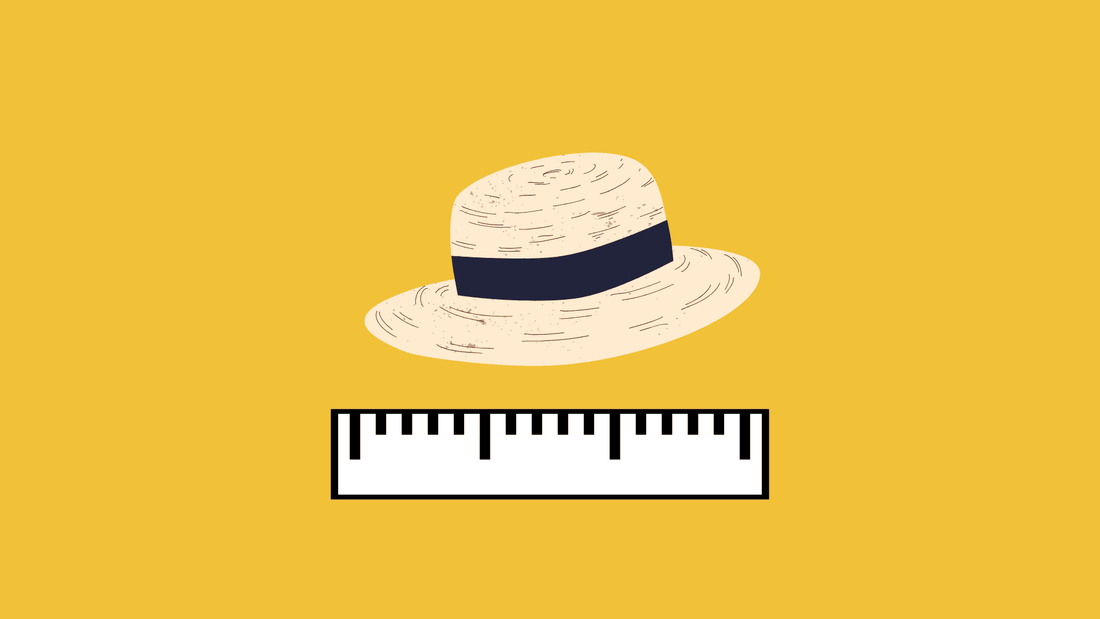
How To Measure Hat Size: Chart & Guide
Share
Sizing systems that vary between different regions, brands, and retailers make it difficult to find the right hat size for your head. If a hat is too big, it can block your line of sight and is at risk of falling off. If it's too small, you may experience discomfort, headaches, and itching.
This hat sizing guide will help you accurately measure your hat size and convert it to other sizing systems. To find the right hat size for you, check out our easy-to-use UK hat size chart below.
Key takeaways
- To measure your hat size, use a soft tape measure to find the circumference of your head, wrapping it across the forehead just above the ears. Then use a hat size chart to determine the correct sizing for your head.
- UK hat sizes range from 6⅜–6½ (universal size: XXS) to 7⅞–8 (universal size: XXL). The ideal hat size for the average adult is 7⅛–7¼ (universal size: M).
- UK hat sizes are based on head diameter (circumference in inches divided by pi), US hat sizes are based on head circumference in inches, and EU/AU/NZ hat sizes are based on head circumference in centimetres.
Hat size chart
| Universal Size | Head Circumference (cm) | Head Circumference (inches) | UK Hat Size |
|---|---|---|---|
| XXS | 51–52 cm | 20.1–20.5 in | 6⅜–6½ |
| XS | 53–54 cm | 20.9–21.3 in | 6⅝–6¾ |
| S | 55–56 cm | 21.7–22.0 in | 6⅞–7 |
| M | 57–58 cm | 22.4–22.8 in | 7⅛–7¼ |
| L | 59–60 cm | 23.2–23.6 in | 7⅜–7½ |
| XL | 61–62 cm | 24.0–24.4 in | 7⅝–7¾ |
| XXL | 63–64 cm | 24.8–25.2 in | 7⅞–8 |
How to measure hat size
To measure your ideal hat size, follow these steps:
- Find the circumference of your head
- Confirm your head size
- Match your measurement using a hat size chart
Here's a more detailed explanation.
1. Find the circumference of your head
To determine your correct hat size, you only need to know the horizontal circumference of your head.
This can be easily measured at home.
First, find a soft measuring tape – flexible fabric tape measures are perfect for this. If you don't have access to one, you can use a piece of string instead (measure the string with a ruler or standard tape measure).
Wrap the measuring tape around your head, just above your eyebrows and ears. Keep the tape horizontally level and pull it snug but not too tight.
Note down the measurement.
2. Confirm your head size
Repeat the process for measuring your head circumference to double-check your work. If the two measurements do not match, measure again to confirm the correct size.
If you're between sizes, we recommend going up one size for a more comfortable fit.
3. Match your measurement using a hat size chart
To determine hat size from measurement, use a hat size chart (like the one featured above) to match your head circumference to the appropriate size.
Alternatively, you can find your UK hat size by dividing your head circumference in inches by pi (3.14).
Pro Tip: If you’re worried your hat will be too small for your head, go for the next size up. If necessary, you can add a layer of foam to the inside of a large hat for comfort.
How does hat sizing work?
Hat sizing systems vary by region. The most common systems are:
- UK hat sizing: Based on head diameter in inches (6⅜ to 8).
-
US hat sizing: Based on head circumference in inches (20.1 to 25.2).
- Europe/NZ/AU hat sizing: Based on head circumference in centimetres (50–52 to 62–64)
- Japan hat sizing: Same as NZ/AU but sometimes rounded down (50 to 63).
- Universal hat sizing: Alpha sizing system (XXS to XXL).
Different brands and retailers may use one or more of the above hat sizing systems. If you're unsure about a size, use a hat size chart to convert the sizing to a system you're familiar with.
International hat size conversion chart
| UK/US Size | EU/NZ/AU Size | Alpha Size |
|---|---|---|
| 6⅜–6½ | 50–52 cm | XXS |
| 6⅝–6¾ | 52–54 cm | XS |
| 6⅞–7 | 54–56 cm | S |
| 7⅛–7¼ | 56–58 cm | M |
| 7⅜–7½ | 58–60 cm | L |
| 7⅝–7¾ | 60–62 cm | XL |
| 7⅞–8 | 62–64 cm | XXL |




